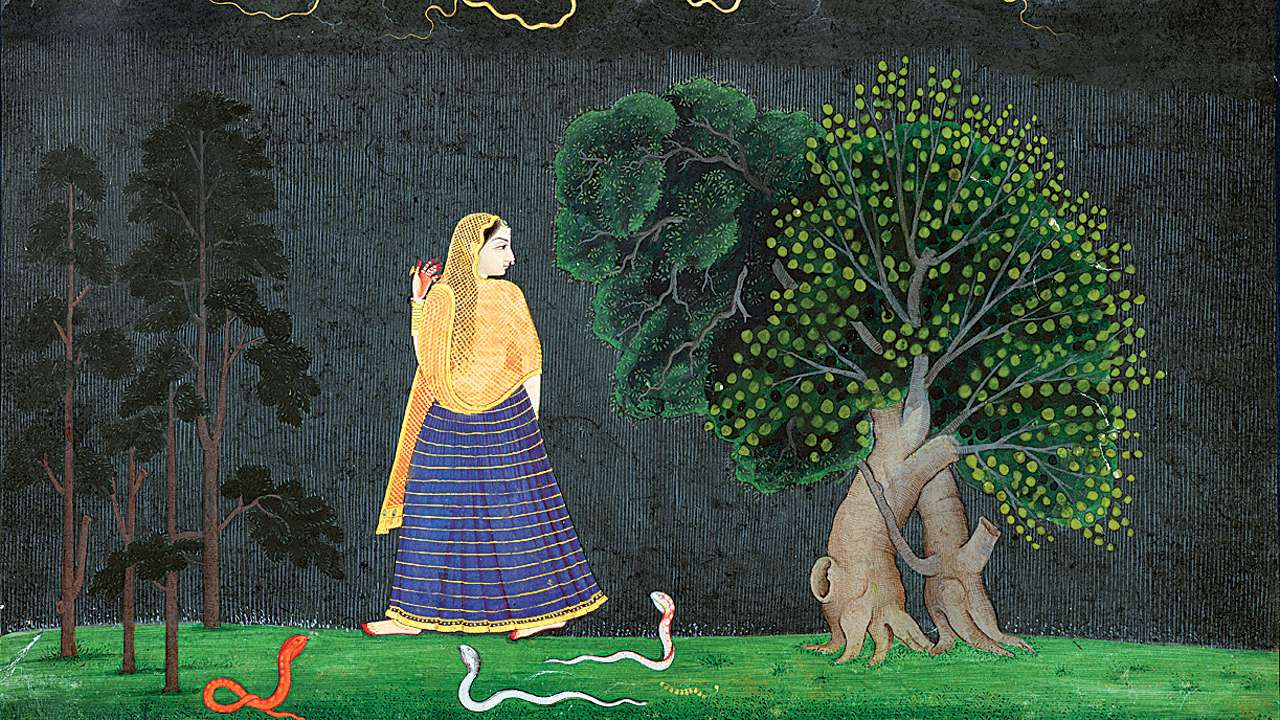
A friend from Delhi laughed at my cardigan when the temperature in Mumbai had hit 18 degrees. “Are you really feeling cold or lonely?” he asked while I just shook my head, embarrassed. Are seasons really only about physical attributes – hot, cold, pleasant, wet and so on? Or do they elicit a more psycho-emotional response in us?
Poets, painters and musicians of this land have suggested the latter for several centuries as evidenced in the form of Baramasa (literally12 months), in which the 12 hues of longing/yearning, the 12 attributes of a young man/woman or the 12 divine attributes of a celestial deity are celebrated, relating them to seasonal characteristics.
As a part of the Chhatrapati Shivaji Maharaj Vastu Sangrahalaya (CSMVS)'s valediction of its landmark exhibition - India and the World: A History in Nine Stories (a collaboration between CSMVS, the British Museum, London and the National Museum, New Delhi, that celebrates 70 years of Indian Independence) eminent Hindustani vocalist-composer Shubha Mudgal will present a special concert - Baramasa: A Year in Song.
“Its been a year of a major cultural exchange between India and the UK and I felt talking about these 12 months from the point of view of seasons would be befitting,” explains Mudgal who points out, “Baramasas have flourished in Indian literature, painting and music right from the north to Central India and even in Deccan in the Southern reaches.”
Others like Sanskrit scholar, musician, priest and legatee of the tradition of Swami Haridas (the spiritual poet-musician from early 1500s who had among his disciples, Tansen, the legendary musician in Emperor Akbar's court) at Vrindavan in Mathura, Uttar Pradesh Pt Mohan Goswami echo Mudgal. He explains how the proliferation of Baramasas in Kumaoni, Bhojpuri, Brijbhasha, Awadhi, Urdu, Punjabi, Dogri, Bengali and Dakhni apart from the Khadi Boli which became prevalent post 19th century are all inspired from the Sanskrit poets of yore. “Mahakavi Kalidasa's Ritu-samharam (the garland of seasons) and the Meghdootam (where a lovelorn Yaksha uses a cloud to send a message to his beloved) describe seasonal changes and effects on a young lover's mood and behaviour. Graceful sensuality, colours and the music of love resonate with the world of blossoms and birds. Kalidasa makes his hero and heroine's urges, pangs and pains that of deer, birds, trees and the sky,” he says and asks, “Where else would you find a tree long for the touch of a lovely maiden as much as a man longs for her embrace?”
Pt Goswami points out how several other Sanskrit poets and playwrights have also dwelt on seasons. “In the 9th century Rajashekhara in his Kavyamimamsha, a treatise on poetry, summarises how aspiring poets should portray seasons highlighting individuality of each month, the imagery to be evoked to represent a season and natural human responses to each season.”
According to him heart-warming descriptions of the seasons can also be found in Bhattikavya by Bhatti; Kiratarjuniya by Bharavi; Shishupala-vadha by Magha; Naishadhacharita by Shriharsha among others. “The Natyashashtra directed how seasons should be shown in theatre through an actor’s gestures and facial expressions.”
He feels the traditional miniatures and pichwais from medieval India also took their cue from there while working on Barahmasas as a form.
Mudgal takes us back to the world of music and poetry by bringing up the instance of the epic poem Padmavat by Sufi poet Malik Muhammad Jayasi which has been in the spotlight following the controversy surrounding the release of the namesake Sanjay Leela Bhansali drama on celluloid. “When Ratansen goes off to the Sinhala kingdom (Sri Lanka) to marry the princess Padamavati he leaves his first wife Nagmati behind in Chittor. Jayasi uses the Barahmasa to speak of her suffering through the seasons as she is separated from her beloved. The same poet uses the same form to speak of Padmavati rejoicing in every season because she is with Ratansen.”
It is this cycle of seasons, abundantly which has inspired Indian art, music, and literature linking shifting moods of nature to a shifting spectrum of emotions that will be presented at the concert. “While singing entire barahmasas can take hours I have chosen a repertoire of compositions on the theme of the seasons of the mind, body and spirit, as extracted from Barahamasa poems in Hindi literature,” says Mudgal who will be accompanied by Aneesh Pradhan (tabla), Dnyaneshwar Sonawane (harmonium), Dhaivat Mehta and Shweta Deshpande (tanpura).
See you there...